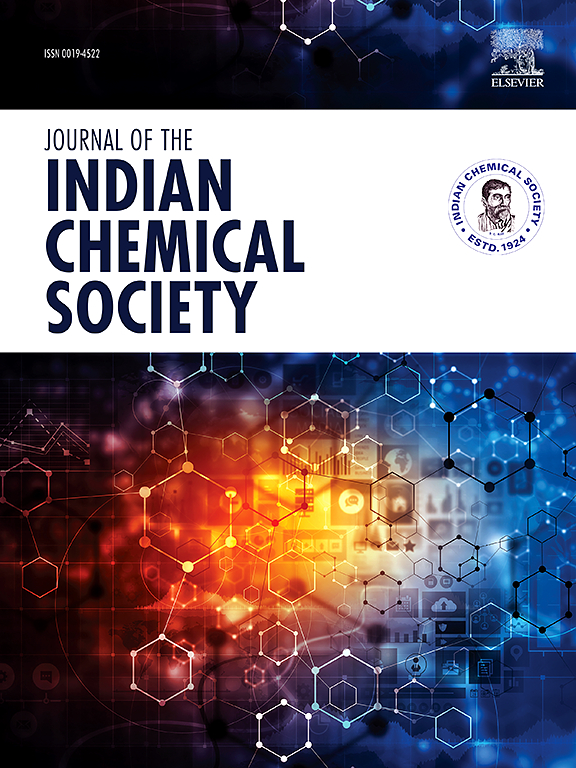Bio-treatment of mixed dye wastewater in aerobic sequential batch reactor
IF 3.2
4区 化学
Q2 CHEMISTRY, MULTIDISCIPLINARY
引用次数: 0
Abstract
Wastewater from textile and dye industries is hazardous due to the presence of various dyes and chemicals. To address this, strict discharge regulations have been imposed by regulatory bodies. In this study, synthetic mixed dye wastewater (MDW) containing four dyes—two acid azo dyes (Acid Red 3BN, Metanil Yellow), one basic azo dye (Malachite Green), and one heterocyclic thiazine dye (Methylene Blue)—was treated using laboratory-scale aerobic sequential batch reactors (ASBR) at a total dye concentration of 500 mg/L (125 mg/L each). The effects of hydraulic retention time (HRT) and fill time (tF) on color removal, pH, COD reduction, and dissolved oxygen were investigated. Treated batch effluent was further processed in a continuous ASBR. An optimal HRT of 2.5 days resulted in 90–95 % reduction in COD and color within 22 h. Kinetic studies revealed a specific growth rate (μ) of 0.03 h−1 and a yield coefficient (Y) of 0.908 at this HRT. Based on comparative results, it is recommended that MDW be pre-treated in batch mode before initiating continuous treatment, as this effectively lowers dye concentration and color, enhancing overall treatment efficiency.

好氧序批式反应器对混合染料废水的生物处理
由于存在各种染料和化学品,纺织和染料工业的废水是危险的。为了解决这个问题,监管机构制定了严格的排放规定。在本研究中,采用实验室规模的好氧序批式反应器(ASBR)处理含有四种染料的合成混合染料废水(MDW),即两种酸性偶氮染料(酸性红30亿,甲基黄),一种碱性偶氮染料(孔雀石绿)和一种杂环噻嗪染料(亚甲基蓝),总染料浓度为500 mg/L(每种125 mg/L)。考察了水力停留时间(HRT)和填充时间(tF)对去色、pH、COD还原和溶解氧的影响。处理后的批出水在连续ASBR中进一步处理。最佳HRT为2.5 d, COD和颜色在22 h内降低90 - 95%。动力学研究表明,该HRT下的特定生长率(μ)为0.03 h−1,产率系数(Y)为0.908。根据对比结果,建议在开始连续处理之前,对MDW进行批量预处理,因为这有效地降低了染料浓度和颜色,提高了整体处理效率。
本文章由计算机程序翻译,如有差异,请以英文原文为准。
求助全文
约1分钟内获得全文
求助全文
来源期刊
CiteScore
3.50
自引率
7.70%
发文量
492
审稿时长
3-8 weeks
期刊介绍:
The Journal of the Indian Chemical Society publishes original, fundamental, theorical, experimental research work of highest quality in all areas of chemistry, biochemistry, medicinal chemistry, electrochemistry, agrochemistry, chemical engineering and technology, food chemistry, environmental chemistry, etc.

 求助内容:
求助内容: 应助结果提醒方式:
应助结果提醒方式:


